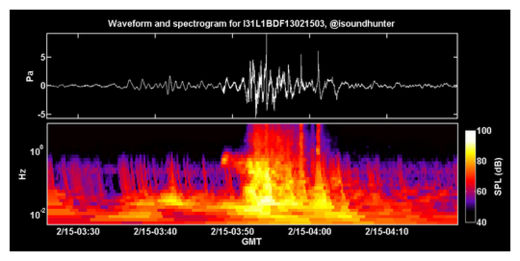OF THE
TIMES
About 3-4 seconds duration. I was facing east on Miramar PKWY at traffic light on Flamingo. A bluish and then bright green colour. No sound. I was inside my car. It was very bright, similar to a firework display. I did not see any fragmentation. It fizzled out before I could take a picture.17 February 2013 - Karina Harfouche, Boca Raton, Florida @ 18:55 EST
5 seconds duration. Left to right, I was facing north. It looked like a ball on fire, about half the size of the moon. It was as bright as the sun, a very bright yellow/orange colour. I was driving from Miami to Boca Raton and saw this fireball going straight down towards the east. After 5 seconds it lit-off and disappeared.17 February 2013 - Jank Foster, Palm Harbor, Florida @ 7:20pm
4 seconds duration. North to south direction. It was a bright yellow fireball.


Awareness of the possibility of large impact events on Earth, although long present among a handful of the most imaginative thinkers, has come of age in this century as a result of studies of Arizona's Meteor Crater and the Tunguska fireball of June 30, 1908, in Siberia, spacecraft observations of cratering on Earth and other rocky bodies, and astronomical surveys of the near-Earth asteroid and comet populations. Appreciation of the effects of large impacts has developed in response to these studies and to the unclassified literature on the effects of large nuclear weapons. [...]
The most intensively studied impact phenomenon, impact cratering, is of limited importance, due to the rarity and large mean time between events for crater-forming impacts. Almost all events causing property damage and lethality are due to bodies less than 100 meters in diameter, almost all of which, except for the very largest and strongest, are fated to explode in the atmosphere. ... Since explosions greater than 1 gigaton TNT are rare on this short of a time scale, we are forced to conclude that the complex behavior of smaller bodies is closely relevant to the threat actually experienced by contemporary civilization. [...]
The large majority of lethal events (not of the number of fatalities) are caused by bodies that are so small, so faint, and so numerous that the cost of the effort required to find, track, predict, and intercept them exceeds the cost of the damage incurred by ignoring them.
(John S. Lewis, Professor of Planetary Sciences at the Lunar and Planetary Laboratory, Co-director of the NASA/University of Arizona Space Engineering Research Center, and Commissioner of the Arizona State Space Commission in: Comet and Asteroid Impact Hazards on a Populated Earth, 2000; Academic Press)
Comment: There's been a dramatic increase of fireballs around the planet in the last few days. For more information about what might be coming down the pike in the near future read: Comets and the Horns of Moses by Laura Knight-Jadczyk